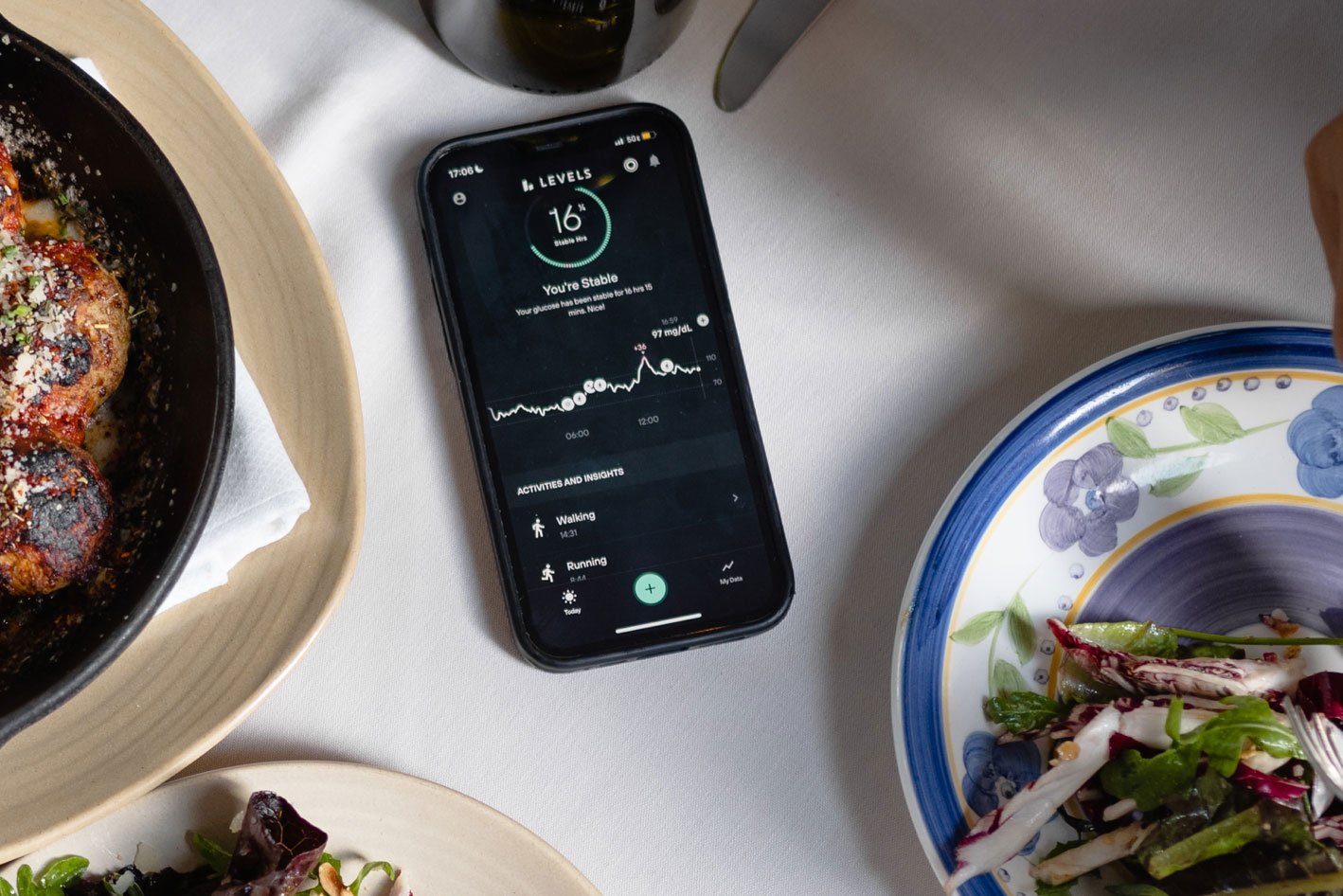Continuous glucose monitors (CGM) are incredible tools—the only consumer device we have for measuring real-time concentrations of a chemical within your body. All in a device the size of a quarter that lasts up to two weeks. Given what they do, it’s not surprising that a month’s supply can cost up to $200 or more.
Similarly, the Levels app, more than five years in the making, adds significant value to the CGM and improves health without a CGM by helping you understand and take action on your body’s data. It ties together your glucose levels, lab values, macro intake, exercise, and sleep to help you find and maintain long-term habits that actually make you healthier. That’s why the software has a monthly or annual fee.
But while the Levels program can be life-changing for many people, the combined costs can be expensive, especially for those who want to wear CGMs continuously.
Fortunately, there are several strategies you can employ to make the program more affordable. By taking advantage of these options, you can still benefit from Levels’s powerful insights and tools without breaking the bank.
1. Try the free version of the app
Levels recently launched a beta free version of our app, which provides nearly everything the paid app has without requiring a continuous glucose monitor (CGM). With the free app, you can log your meals, track your macronutrient intake, and receive personalized dietary insights. The app also includes Habit Loops, which allows you to set and monitor goals related to macro intake, steps per day, exercise intensity, sleep duration, and more. Using the free app to establish healthy habits and track your progress, you can lay the foundation for better metabolic health before investing in a CGM.
2. Use CGMs intermittently
While wearing a CGM continuously provides the most comprehensive data, it’s not necessary for everyone. Many users find success by wearing a CGM for an initial month to establish a baseline view of their metabolic health and understand how their diet and lifestyle affect their blood sugar. After that, they use CGMs intermittently, such as quarterly, to check progress and make adjustments as needed. In between CGMs, you can continue to use the Levels app to track your meals, get personalized insights, and stick to your habits. This approach allows you to benefit from the insights provided by a CGM without committing to the ongoing monthly cost.
3. Check your insurance coverage
Although CGMs are not universally covered, even for people who have Type 1 or Type 2 diabetes, they may be covered regardless of a metabolic diagnosis. Talk to your doctor about obtaining a prescription for a CGM (tips here on how to talk about metabolic health with your primary care physician), and check with your insurance provider to see if they offer coverage. (Levels members who do not wish to participate in our large-scale glucose study can get a prescription through an async medical consult through Levels as well.)
4. Explore alternative CGM sources
If you obtain a prescription for a CGM through Levels or your doctor, you may be able to purchase the devices at a lower cost from sources like Amazon or Costco. Levels provides a way for you to “Bring Your Own Device,” so you can still benefit from our analytics and insights while potentially saving money on the devices.
5. Utilize your HSA funds
Although Levels is a general health and wellness tool that doesn’t qualify for HSA coverage, a company called Truemed can help you navigate the process of getting Levels and related expenses covered by your HSA. By using pre-tax dollars from your HSA, you can reduce the out-of-pocket cost of the program.
In addition to these strategies, remember that there are many steps you can take to improve your metabolic health without using a CGM at all. Focusing on the fundamentals like maintaining a balanced diet, staying active throughout the day, managing stress, and prioritizing sleep can go a long way in optimizing your health. Resources like Levels cofounder Dr. Casey Means’ new book, Good Energy, and the more than 600 research-backed, reported articles on the Levels blog can provide valuable guidance on these lifestyle factors.
Conclusion
Combining these cost-saving strategies with a commitment to healthy habits can make Levels a more affordable and sustainable tool for optimizing your health. Remember, the key is finding an approach that works for your individual needs and budget while empowering you to make meaningful improvements.








